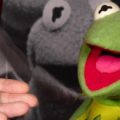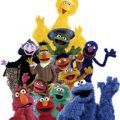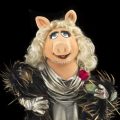Kermit comes home
Kermit the Frog (at least the beta version) has returned to Washington, D.C. In a special ceremony on August 25, the National Museum of American History accepted 10 characters from the television program “Sam and Friends” from Jane Henson, on behalf of the Jim Henson family.
“Sam and Friends” debuted on local Washington, D.C., station WRC-TV in 1955 launching what would become a global phenomenon—the Muppets. The show featured a host of unique characters, including the original Kermit the Frog, who was then more of a lizard-like creature, constructed with ping pong ball eyes and green felt from a coat discarded by Jim Henson’s mother. This version of Kermit does not have his signature collar, and his feet are rounded.
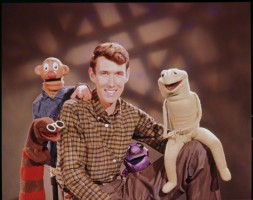
Jim Henson poses with characters from the TV show “Sam and Friends,” ca. 1956/57. Left to right: Harry the Hipster, Sam, Jim Henson, Kermit (original), Yorick. (Photo courtesy The Jim Henson Company and The Muppets Studio LLC)
Joining Kermit on display at the museum this fall are other characters from “Sam and Friends,” including Pierre the French Rat, Henson’s oldest surviving puppet, first drawn in 1954 as part of a comic strip for his high school yearbook; Yorick, a purple papier-mâché skull who was a precursor to hungry creatures such as the Cookie Monster; Mushmellon, whose wide face and grouchy eyes bear a distinct resemblance to Oscar the Grouch; and Sam, the main character who never spoke but lip-synced to popular music and comedy records of the time.
Henson saw enormous potential for puppets on television and coined the term Muppet in the mid-1950s. Seemingly a combination of puppet and marionette, Henson insisted that he chose the word simply because he liked the way it sounded. Central to the design of a Muppet is the construction of the face—creating a pattern with the eyes, nose and mouth called “the magic triangle”—which establishes a point of focus that helps to bring the puppet to life in the eye of a video camera and to the viewers watching at home. From their early beginnings on “Sam and Friends”—of which only a few episodes survive—the Muppets went on to evolve and achieve worldwide popularity as characters on “Sesame Street” and “The Muppet Show.” Introduced in 1976, “The Muppet Show” won three Emmys during its five-year run and reached an audience of 235 million viewers in more than 100 countries. The characters also appeared in feature films such as “The Muppet Movie,” “The Great Muppet Caper” and “The Muppets take Manhattan.”
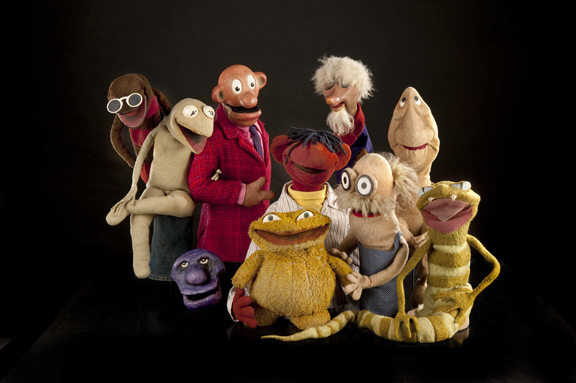
The Muppet characters from "Sam and Friends," including the original Kermit the Frog ((second from left.) (Photo by Richard Strauss)
“It is wonderful that Sam and Friends should find themselves back here in Washington, D.C., where they first appeared,” said Jane Henson, Henson’s widow. “And now they get to greet old friends and meet new ones at the newly renovated and exciting National Museum of American History.”
The museum also has a later version of Kermit the Frog in its collection. First loaned in 1979 in celebration of Sesame Street’s 10th anniversary, Jim Henson Productions designated Kermit as a gift in 1994, making him a permanent fixture in the museum’s performance collections.
For more information about the life and work of Jim Henson, visit The Jim Henson Legacy website.
Posted: 31 August 2010
-
Categories:
American History Museum , History and Culture , News & Announcements
